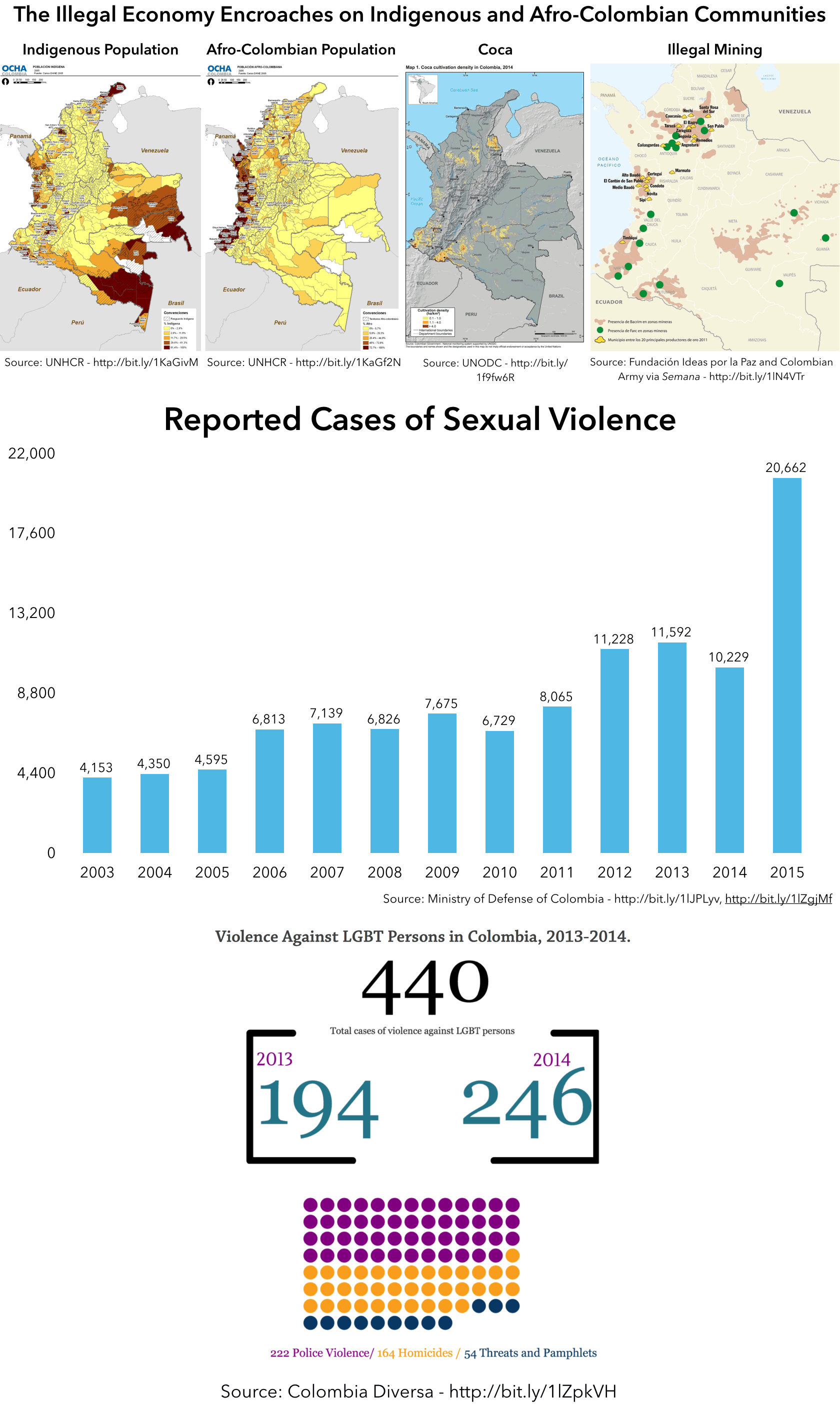Vulnerable Groups
Colombia’s armed conflict has taken an especially heavy toll on under-represented communities. Afro-Colombians make up about 18-26 percent of Colombia’s population, but over 30 percent of Colombia’s displaced population. And an estimated 28 percent of Colombia’s indigenous people have been forced from their territories.
Violence and displacement remain intense today in territories with a high concentration of indigenous reserves and Afro-Colombian collective landholdings, like the Pacific coast, southern border, and Amazon tributaries. These are zones where armed and organized criminal groups compete to control drug trafficking corridors and illegal mining, and where encroachment on collective landholdings too often occurs with impunity.
(Text continues below the infographic)

Among Colombia’s internally displaced population, nearly half of households are headed by women. Women have suffered levels of sexual violence—much of it conflict-related—that, though under-reported, are believed to be shockingly severe. A 2011 survey by Colombia’s Rape and Other Violence Campaign estimated, by extrapolating results, that over 489,000 women were victims of sexual violence between 2001 and 2009. More recently, official statistics have shown a spike in reports of sexual violence, most of it unrelated to the conflict, that Defense Minister Luis Carlos Villegas has called “a crime wave.”
Better reporting and non-governmental advocacy have begun to draw attention to hate crimes against Colombia’s LGBT population. While not necessarily conflict-related, one of the main perpetrators of abuse against gay, lesbian, and transgender people is Colombia’s National Police, a principal recipient of “Plan Colombia” support. The NGO Colombia Diversa documented 222 cases of police violence against LGBT Colombians in 2013 and 2014, but found no case that had even gone to trial.
 15
15